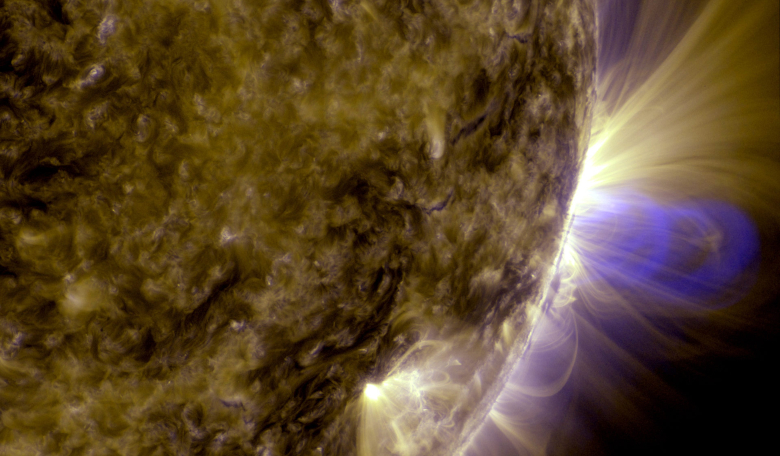Two of the biggest mysteries facing solar science today are one step closer to being solved thanks to an eagle-eyed scientist who has found a key piece of evidence hiding in plain sight but at the wrong location.
There are a lot of things we don’t know about the life-sustaining, enormous hot ball of plasma that our planet orbits around, but perhaps one of the most endearing conundrums is why the Sun’s outer atmosphere, known as the corona, is some 300 times hotter than its surface – a problem that has plagued researchers for 70 years. The other enigma, while no less important, involves processes that drive the solar wind.
Key to both of these phenomena is something called coronal rain. Rain on the Sun is nothing at all like rain on Earth. While it might follow a cycle similar to that of our hydrological cycle, instead of H2O droplets falling from the sky after condensing into clouds, coronal rain drips giant globs of electrified gas.
Coronal rain starts its journey as an incredibly hot – one million degree celsius – plasma which flows along magnetic field loops that have emerged from the Sun’s surface. When the plasma reaches the peak of the loop, far from the initial heat source, it cools and then condenses. Like the wet H2O variety on our planet, gravity then pulls the plasma back down to fall as blobs of rain.
Computer simulations had predicted that the coronal rain should be found in a solar feature called helmet streamers; large cap-like coronal structures with long pointed peaks that extend high into the corona and can be readily observed during a solar eclipse. Rain or small blobs of plasma released from the tips of these helmet streamers are what makes up the slow component of the solar wind, a stream of charged particles that escapes the Sun’s upper atmosphere.
Since at least the mid-1990s, scientists have known that helmet streamers are one source of the slow solar wind – not to the confused with its speedier counterpart, the fast solar wind, which is thought to originate from coronal holes. And, as the slow solar wind was shown to have been heated to an extreme degree before cooling and escaping the Sun, could coronal rain be involved somehow?
Finding plasma blobs along these million-mile long magnetic loops, named so for their resemblance to a knight’s pointy helmet, has proved incredibly challenging though. However, after months of searching through years worth of data taken by NASA’s Solar Dynamics Observatory, or SDO, Emily Mason, a solar scientist at NASA’s Goddard Space Flight Center stumbled upon a breakthrough; the rain was there, it just wasn’t where it should have been.
Instead of running along helmet streamers, the rain was spotted on brighter, but much smaller loops that were around 48,000 kilometres (30,000 miles) high; a mere two percent the height of some of the helmet streamers Mason was originally looking for.
“If a loop has coronal rain on it, that means that the bottom 10 percent of it, or less, is where coronal heating is happening,” said Mason. Although the findings don’t say exactly how the corona is heated, the rain-dripped loops provide a measuring rod, or foundation to help determine where the corona gets heated. “We know it has to happen in this layer,” added Mason.
Mason’s analysis has also helped overturn another central idea which postulated that coronal rain only forms on closed loops, where the plasma can gather and cool without any way to escape.
This appears not to be the case and when Mason sifted through the data, she found evidence where rain was forming on open magnetic field lines, meaning that they were anchored to the Sun at only one end. These unbound loops which fed out into space, left a clear path for plasma to escape into the solar wind.
Closed loops can switch to an open one through a process known as magnetic reconnection and it happens frequently on the Sun. Mason and her colleagues think that this is the way the rain is produced; some of the blobs of plasma rapidly expand, cool down, and fall back to the Sun as coronal rain, while other parts of it escape to form one part of the slow solar wind.
Mason is currently working on a computer simulation to elucidate this new explanation, but she also hopes that the Parker Solar Probe, which is traveling closer to the Sun than any spacecraft before, could provide much needed observational evidence to confirm the theory.











